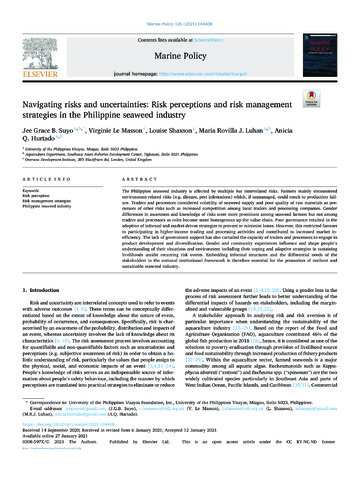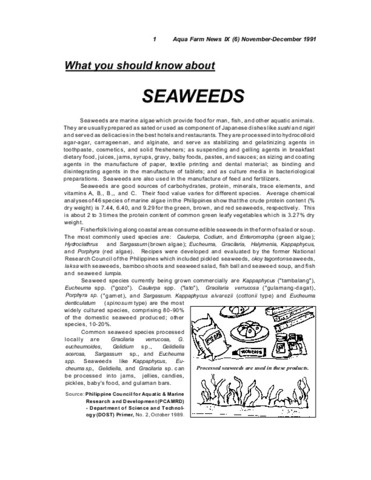Vertical rope cultivation of Gracilaria (Rhodophyta) using vegetative fragments
- Global styles
- MLA
- Vancouver
- Elsevier - Harvard
- APA
- Help

View/
Date
1990Author
Page views
2,109ASFA keyword
AGROVOC keyword
Metadata
Perlihat publikasi penuh
Share
Abstract
Preliminary field culture of Gracilaria using vegetative fragments inserted between braids of ropes suspended vertically inside a floating cage was undertaken to assess the daily growth rate and monthly yield as influenced by three different spacing intervals.
Daily growth rate of cuttings at 10 cm intervals ranged from 0.6 to 7.2% with yields of 11 to 415 g m-1 line1, those at 15 cm from 1.4 to 9.1% with yields of 18 to 502 g m-1 line-1, and at 20 cm from 1.7 to 10.5% and with yields of 20 to 379 g m-1 line-1. Both growth and yield were minimum in December at all spacing intervals but maximum in April at 10 and 15 cm and in February at 20 cm.
Results of the analysis of variance (ANOVA) showed a non-significant interaction between spacing interval and culture month on daily yield of Gracilaria. This indicates that the effect of spacing interval on the daily growth rate and monthly yield was not significantly influenced by the culture month; likewise the effect of culture month did not differ significantly with the intervals used. The main effects, however, of spacing interval and culture month to daily growth rate were significant. Yield was significantly affected by the culture month but not by spacing interval.
Suggested Citation
Hurtado-Ponce, A. Q. (1990). Vertical rope cultivation of Gracilaria (Rhodophyta) using vegetative fragments. Botanica Marina , 33(6), 477-481. https://doi.org/10.1515/botm.1990.33.6.477
Type
ArticleISSN
0006-8055Koleksi
- Journal Articles [1256]
Related items
Showing items related by title, author, creator and subject.
-
Navigating risks and uncertainties: Risk perceptions and risk management strategies in the Philippine seaweed industry
Suyo, Jee Grace; Le Masson, Virginie; Shaxson, Louise; Luhan, Maria Rovilla; Hurtado, Anicia Q. (Elsevier, 2021-04)The Philippine seaweed industry is affected by multiple but interrelated risks. Farmers mainly encountered environment-related risks (e.g. disease, pest infestations) which, if unmanaged, could result to production failure. ... -
Status of seaweed farming in Region 9
Kalbi, Halpi H. (Aquaculture Department, Southeast Asian Fisheries Development Center, 2002) -
What you should know about seaweeds
Carreon-Lagoc, Julia; Southeast Asian Fisheries Development Center, Aquaculture Department (Aquaculture Department, Southeast Asian Fisheries Development Center, 1991)




